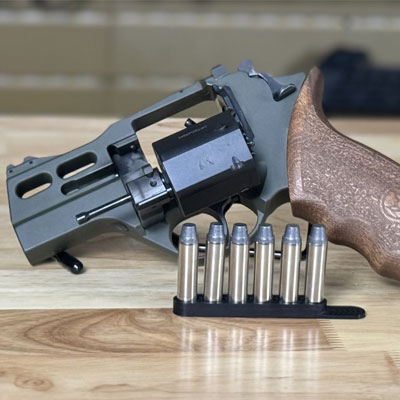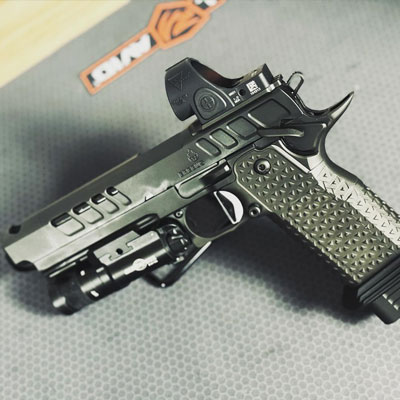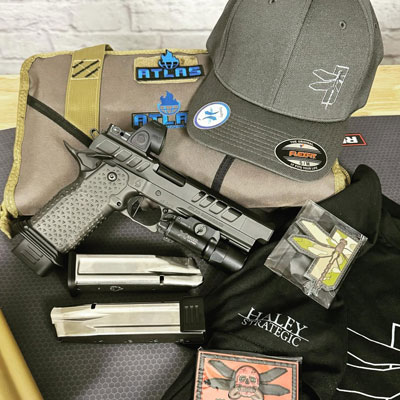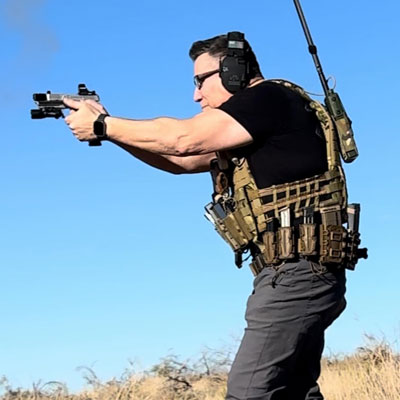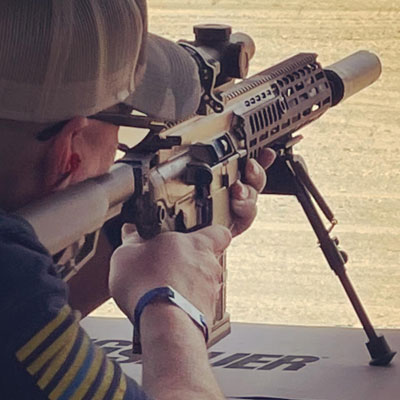Staccato XC vs. MAC 9 DS-D Comp: Is Elite Worth the Extra Cost?
The 2011 pistol space continues to grow, with new contenders bringing compensated, optics-ready steel frames to the table. Two pistols generating a lot of buzz are the MAC 9 DS-D Comp from Military Armament Corporation and the well-established Staccato XC. While they both fill similar roles on paper, the difference in price — roughly $1,079 MSRP vs. $4,299 MSRP — begs the question: is the Staccato XC worth nearly four times as much?
Let’s break it down.
Frame, Build, and Materials
MAC 9 DS-D Comp
- Frame & Slide: Forged steel
- Barrel: 5-inch bull barrel with integrated single-port compensator
- Trigger Setup: 70 Series, STI-compatible internals
- Weight: Approximately 42 oz (unloaded)
- MSRP: $1,079
The MAC’s steel frame gives it real heft and durability. It’s not trying to hide its intentions — it wants to be a budget-friendly 2011 that shoots flat, stays affordable, and offers customization potential right out of the gate.
Staccato XC
- Frame & Slide: DLC-coated steel frame with aluminum grip module
- Barrel: 5-inch island-compensated bull barrel
- Trigger Setup: Staccato-tuned, 2.5 lbs (measured)
- Weight: ~37.5 oz (unloaded)
- MSRP: $4,299
The XC is Staccato’s flagship, purpose-built for flat, fast shooting. Everything from the DLC coating to the Dawson tool-less recoil system feels refined. The tolerances are tighter, and the motion of the slide is smoother than anything else in its class.
Optics-Ready Systems
MAC 9 DS-D
- Mounting System: Agency Arms AOS plates (included)
- Issues: Users — myself included — have experienced optic plate screw shearing under recommended torque. Highly recommend replacing the factory screws with higher-quality hardware before mounting an optic.
Staccato XC
- Mounting System: Staccato optic-ready system with Dawson Precision plates
- Compatibility: Trijicon SRO, Holosun 507 Comp, and more
- Co-witness: Suppressor-height irons allow perfect co-witness with most red dots
While both are technically optics-ready, the Staccato system is more reliable out of the box. No screw issues, no second-guessing.
Trigger Feel and Performance
MAC 9 DS-D
- Included trigger shoes: Short, medium, and long
- Feel: Crisp break, light take-up, a little stacking in reset
- Aftermarket Compatibility: STI/2011 trigger shoes are interchangeable
The trigger is solid, especially for the price point. It’s not tuned like the Staccato, but it offers more modularity right out of the box.
Staccato XC
- Measured pull weight: ~2.5 lbs
- Feel: Glass-like break, nearly instant reset, extremely predictable
- Responsiveness: On par with some competition-only 1911s
This is where the price tag starts to make sense. The trigger on the XC is easily one of the best I’ve ever felt.
Grip & Control
MAC 9 DS-D
- Grip Texture: Mild; usable but could benefit from added tape or stippling
- Recoil Control: Manageable, but not as flat due to milder grip texture and compensator design
- Support Hand Shift: Not uncommon during extended rapid strings
Staccato XC
- Grip Texture: More aggressive; locks in your hands under recoil
- Recoil Control: Extremely flat, thanks to the island comp, grip angle, and Dawson recoil system
- Shooting Feel: Like a high-performance machine that wants to go faster
The XC clearly dominates when it comes to shootability. Faster splits, quicker transitions, and less muzzle rise — it’s elite performance without the need for modification.
Included Accessories
MAC 9 DS-D
- Soft carry case
- Cleaning kit
- Two magazines
- Three trigger shoes
Staccato XC
- Hard case
- One magazine (though often upgraded through retailers)
- Test target
- Dawson Precision tools & cleaning cloth
MAC offers more “out-of-the-box” value, but the XC’s quality shows more in execution than extras.
Range Results Recap
I ran both pistols through the same drills:
- Accuracy Testing (slow-fire at 15 & 25 yards)
- Both pistols grouped well.
- XC was more precise, likely due to its superior trigger and comp system.
- 3-Shot Follow-Up Drill
- MAC performed admirably, but required more effort to control.
- The XC stayed laser-flat and delivered faster, tighter follow-ups.
- Rapid Fire Control Test
- MAC had noticeable muzzle rise and slight support hand drift.
- XC was surgical. Barely moved.
Final Thoughts: Which Should You Buy?
Go with the MAC 9 DS-D Comp if:
- You’re on a budget but want a true steel-frame, compensated 2011.
- You’re comfortable doing minor upgrades (optics screws, grip tape).
- You want modular trigger options and STI compatibility.
Choose the Staccato XC if:
- You want the best performance possible — no compromise.
- You’re focused on flat shooting, ultra-clean triggers, and speed.
- You appreciate fit, finish, and proven reliability right out of the box.
The Verdict
The MAC 9 DS-D Comp punches way above its price tag and brings a lot to the table. But the Staccato XC is the gold standard for a reason — it’s flat, fast, and built like a performance engine wrapped in steel. If you can afford it, the XC is the clear winner. If you’re saving your dollars, the MAC will absolutely get the job done — with some tuning.
Follow for more real-world firearms comparisons and breakdowns:
Instagram: @razor.mp
X: @RazorMP_actual
Rumble: RazorMP Official

